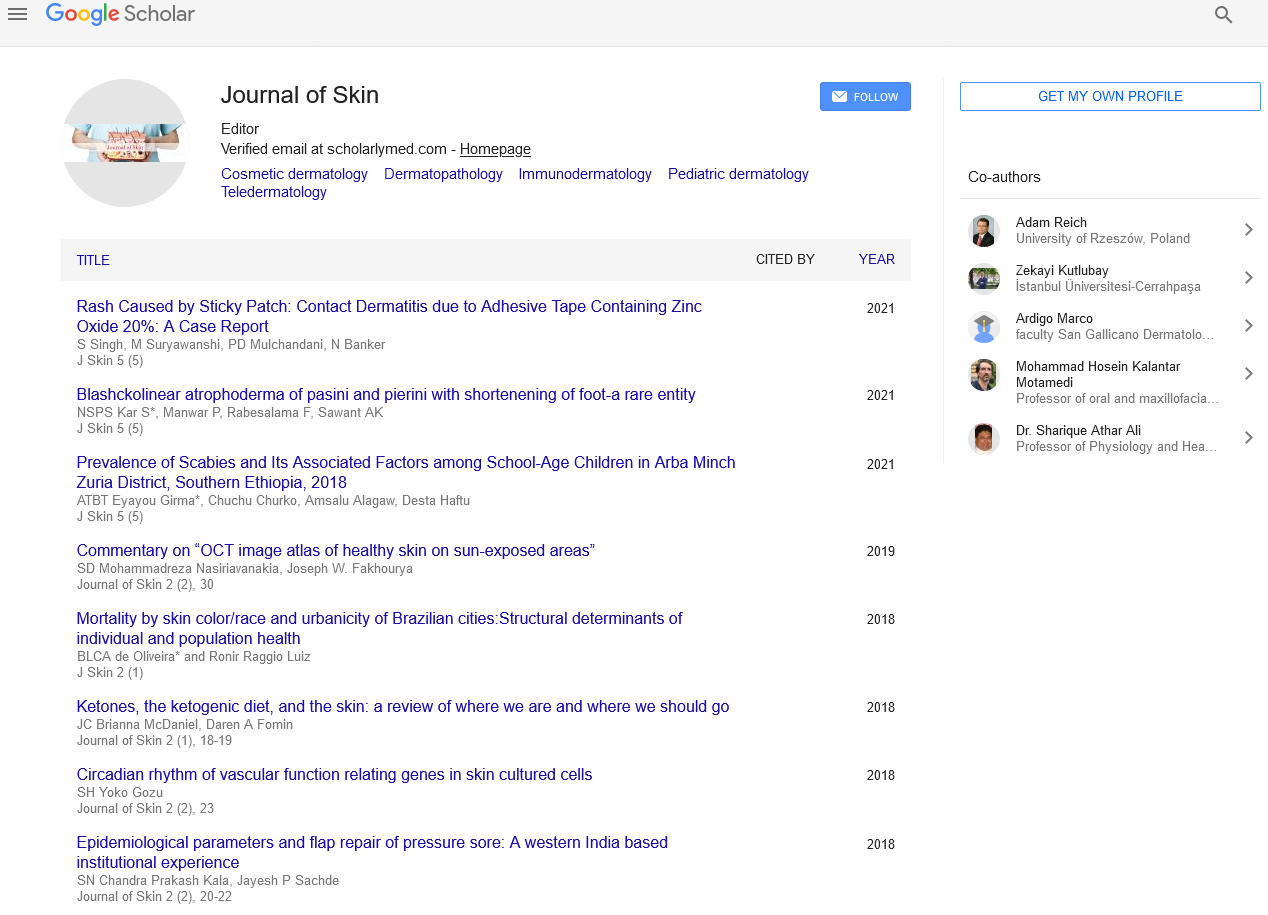Etiology and management of blisters
Received: 07-Sep-2021 Accepted Date: Sep 21, 2021; Published: 28-Sep-2021
Citation: Jayawardana M. Etiology and management of blisters. J Skin. 2021;5(4):3
This open-access article is distributed under the terms of the Creative Commons Attribution Non-Commercial License (CC BY-NC) (http://creativecommons.org/licenses/by-nc/4.0/), which permits reuse, distribution and reproduction of the article, provided that the original work is properly cited and the reuse is restricted to noncommercial purposes. For commercial reuse, contact reprints@pulsus.com
Editorial Note
Blisters are relatively uncommon complication of fractures in areas of the ody, such as the foot, wrist elbow and ankle, mainly where skin adheres compactly to bone with little subcutaneous fat cushioning. The blister that forms resembles that of a second degree burn. These blisters mainly vary treatment, making it difficult to bandage or cast and often overlying ideal surgical incision sites. Do not keep pressure on blisters if this form in the areas like under feet covers it with donut-shaped moleskin on it. Fracture blisters change the management and definitive repair significantly; however, since there is no treatment of the blisters themselves. Blisters are filled with serum, plasma, blood or pus depending on how and where they are formed.
There are some threat factors, recognition and early treatment strategies that would be most helpful for the emergency surgeon. Wearing ill-fitting shoes may increase the risk of blisters. This also leads to severe skin swelling, especially of the legs and hands. Blisters are mainly caused due to Friction, Cold and Heat, Contact Dermatitis, Atopic Dermatitis, Chickenpox & Shingles. The blister bubble is mainly formed from the epidermis, which is the uppermost layer of skin. We can heal blisters by using sterilize a clean, sharp needle by wiping it with rubbing alcohol and use the needle to puncture the blister. It can treat by applying the ointment like petroleum gel and cover it with an adhesive bandage. Prescription medications for blisters are valacyclovir, famciclovir; penciclovir. The blisters are mainly caused by the viruses HSV-1 and HSV-2 cause oral and genital lesions. These blisters are formed in masses and weep clear yellow fluid and then crust over. Signs include Signs also include mild flu-like symptoms such as fever, fatigue, swollen lymph nodes, headache, body aches, and decreased appetite. Sometimes it may reoccur due to illness, Menstruation, and exposure to skin. Allow the fluid to drain away naturally and carefully wash it with minor soap water. Blisters can be prevented by wearing well-fitted, comfortable footwear and clean socks. During exercise and sports, especially designed sports socks helps to reduce the amount of available foot sweat. Although blisters are a painful irritation, they do not certainly suggest any medical issues. A person should maintain their feet clean and dry, and dry them with a separate towel. Antifungal medicines are available in most drugstores as sprays, powders, or lotions to apply to the feet.
If the fungus is increasing or deterioration after treatment, a person should visit their doctor who can suggest oral antifungal medicines for the condition. Conventional treatment measures will typically improve the symptoms of a bunion. A person should dress properly and fit shoes without high heels. They can also purchase a bunion pad at a shoe store or drugstore that protects the bunion from extra pressure. By applying ice for 10-minute increases with a cloth-covered ice pack can also shrink inflammation. Keeping good health and blood sugar control can help a person treat their diabetic neuropathy. While a doctor cannot converse nerve damage, they can suggest treatments to prevent it worsening.





